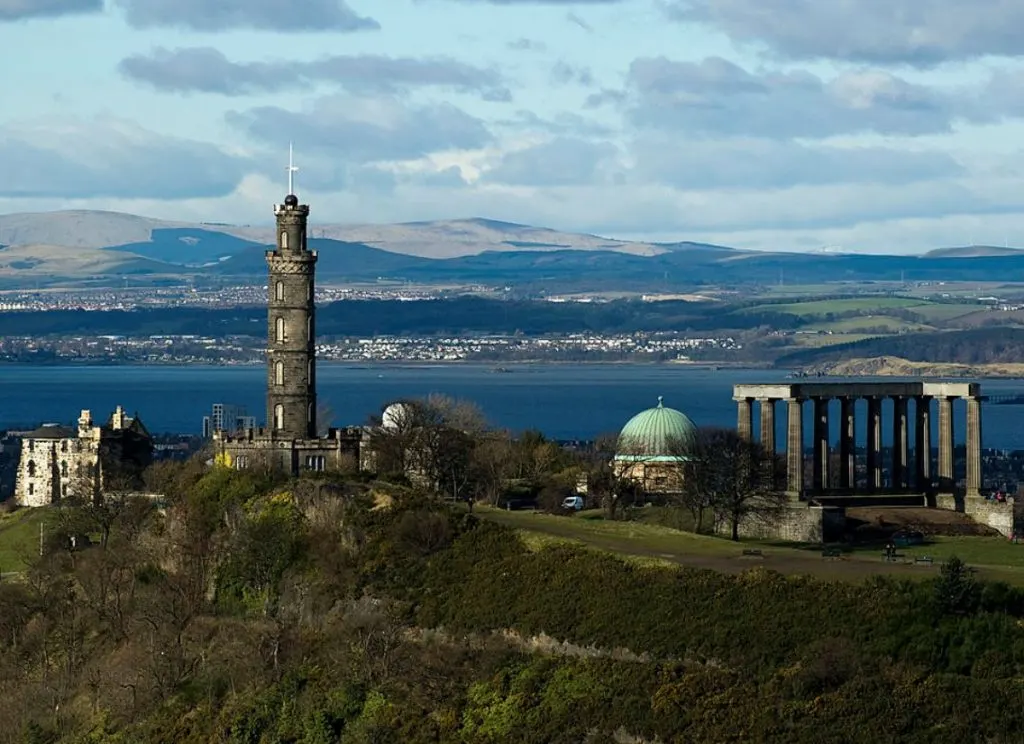One of the most iconic monuments in London is a huge commemorative column that was built in honor of a man who died during an important event in the early 19th century.
In this post, you’ll discover the ultimate list of interesting Nelson’s Column facts, one of the most famous attractions in the city!
1. It stands on one of the most famous squares in London
Nelson’s Column is a huge monument located on Trafalgar Square in the City of Westminster, an inner London city and borough. It’s one of the most famous squares in London and was built in the 19th century and completed around 1840.
Other famous buildings facing the square are the National Gallery, a huge art museum, the St Martin-in-the-Fields church, and the Canada House and South Africa House.
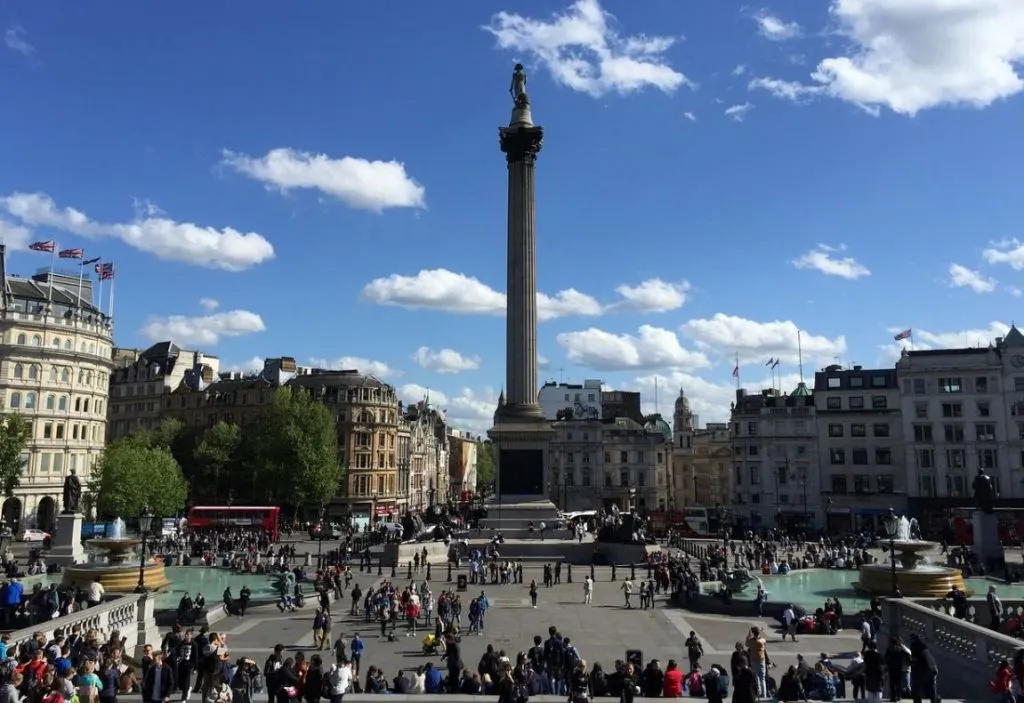
2. It was built 35 years after the fatal Battle of Trafalgar
The square was named in honor of the Battle of Trafalgar, a naval battle that took place off Cape Trafalgar in the southwest of Spain. It was a crucial battle during the Napoleonic Wars in the early 19th century that was fought between the Royal Navy and the fleet of the Spanish and French Navies.
Even though the British were outnumbered, the decisiveness of Admiral Horatio Nelson (1758-1805) resulted in a victory of the Royal Navy. None of the British ships lost against 22 of the Spanish and French fleet.
Unfortunately, a French sharpshooter managed to shoot and kill Admiral Horatio Nelson. He died that same day on October 21, 1805, shortly before the battle was finished.
Nelson’s Column was constructed 35 years later in 1840, shortly after the completion of Trafalgar Square, and completed in 1843.
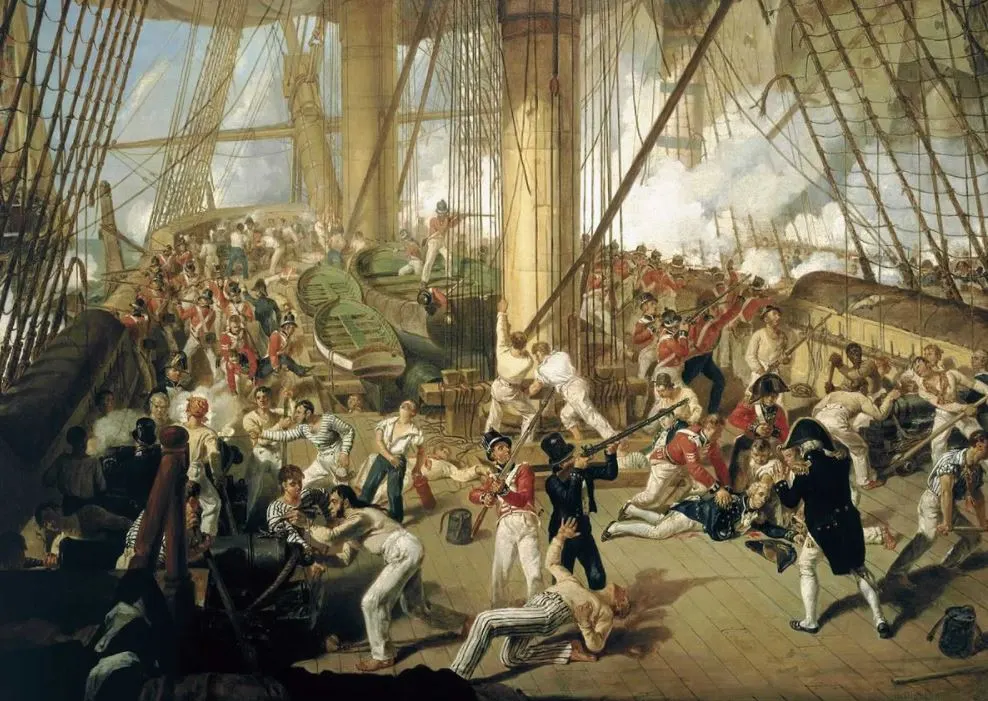
3. The winner of the contest to pick the design won it twice
A committee consisting of 121 men was formed in 1838 to pick a design of what would become a grandiose monument in honor of Horatio Nelson, 1st Viscount Nelson, 1st Duke of Bronté.

The budget was raised by the public and totaled between £20,000 and £30,000. The total amount raised was eventually £20,485 in public subscriptions. This turned out to be far from enough as the project cost a whopping £47,000, the equivalent of over £4.6 million today!
The winner of the design contest was William Railton (1800-1877), a relatively unknown architect who ended 4th in the design competition of the new Palace of Westminster in 1836.
He designed a Corinthian column that featured a statue of Nelson on top and flanked by 4 statues of lions and steps leading up to the pedestal. Remarkably, the competition had a re-run after some criticism but was won again by Railton!

4. The monument was built with granite from southwest England
The monument was built with massive granite blocks that were quarried in the south of Devon at the Foggintor quarries of Dartmoor in the southwest of England.
The bronze capital of the fluted Corinthian column was extracted from the wreck of HMS Royal George. This ship sank in 1782 while it was anchored at Spithead off Portsmouth resulting in the death of over 800 people, one of the biggest maritime disasters in British history.
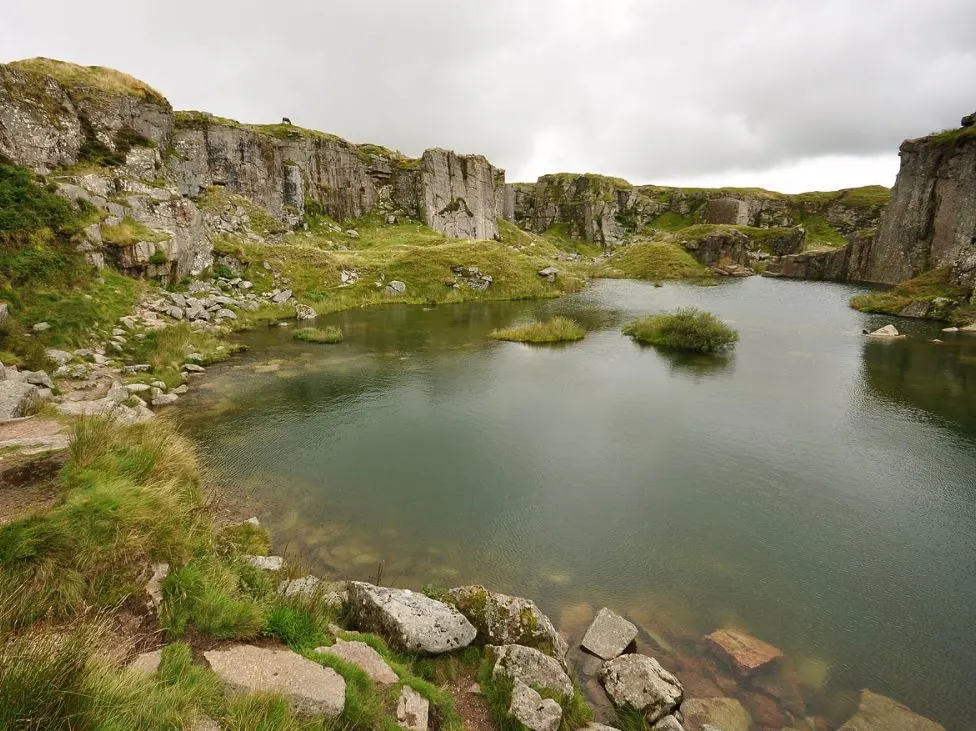
5. It’s much bigger than it initially appears to be
The original plan of the column was to build it as high as 203 feet (62 meters). It was also supposed to be partially constructed using sandstone, but both these things were changed due to concerns over the stability of the monument.
The height was eventually reduced to almost 170 feet (52 meters) including the pedestal and the statue on top of it. The shaft of the column has a total length of 98 feet (30 meters) and is completely built using granite from Dartmoor.
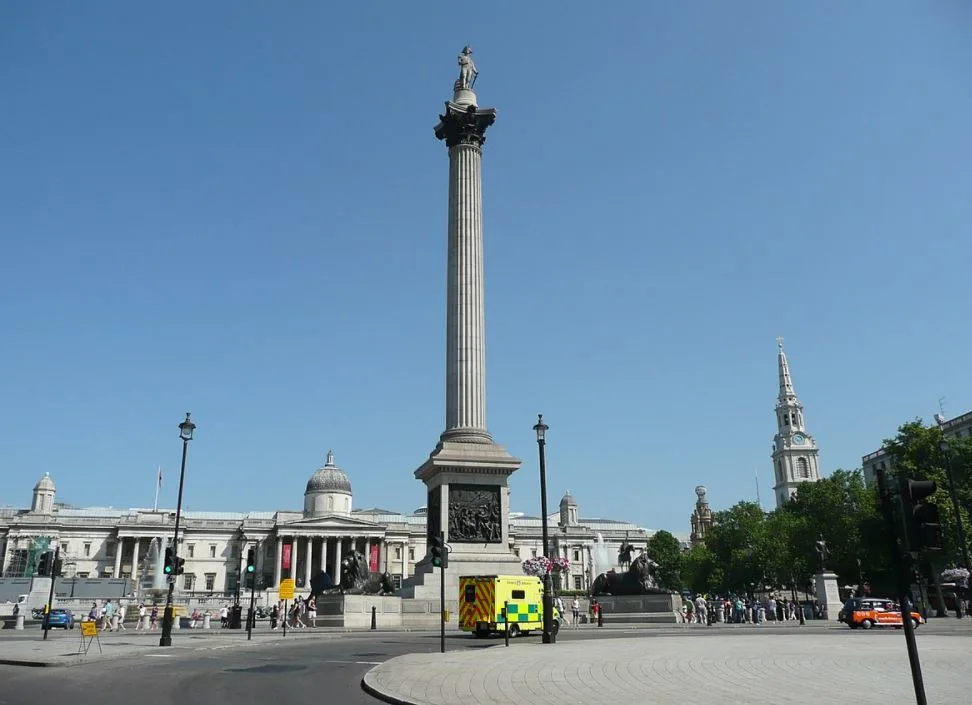
6. The monument is topped with a statue of the heroic Admiral
The main feature of the monument is the statue on top of the column that depicts Admiral Horatio Nelson. This statue was made of sandstone and has a total height of 18 feet 1 inch (5.5 meters).
It was sculpted by English sculptor Edward Hodges Baily and made of 3 separate pieces of Craigleith sandstone that were donated by the Duke of Buccleuch, a man who was a member of the committee in charge of the monument’s construction.
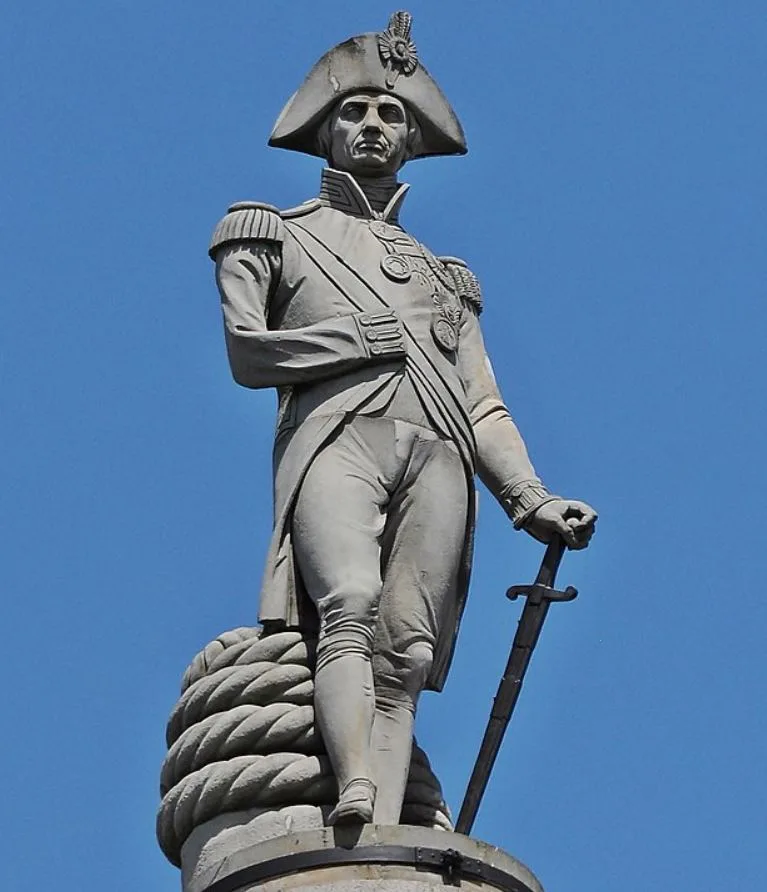
7. The bronze reliefs on the monument’s base originate in France
Even though the column was completed in the year 1843, the 4 bronze reliefs that decorate the sides of the monument’s pedestal weren’t added until the year 1849.
These bronze reliefs are squares with a diameter of 18 feet (5.5 meters) and depict important battles fought by Nelson and his death during the Battle of Trafalgar in 1805. The depicted battles are “The Battle of Cape St Vincent” (1798), “The Battle of the Nile” (1798), and “The Battle of Copenhagen”(1801).
One of the most remarkable Nelson’s Column facts is that these bronze reliefs were cast from French cannons that were captured during the Napoleonic Wars, which means they are literally French-made!
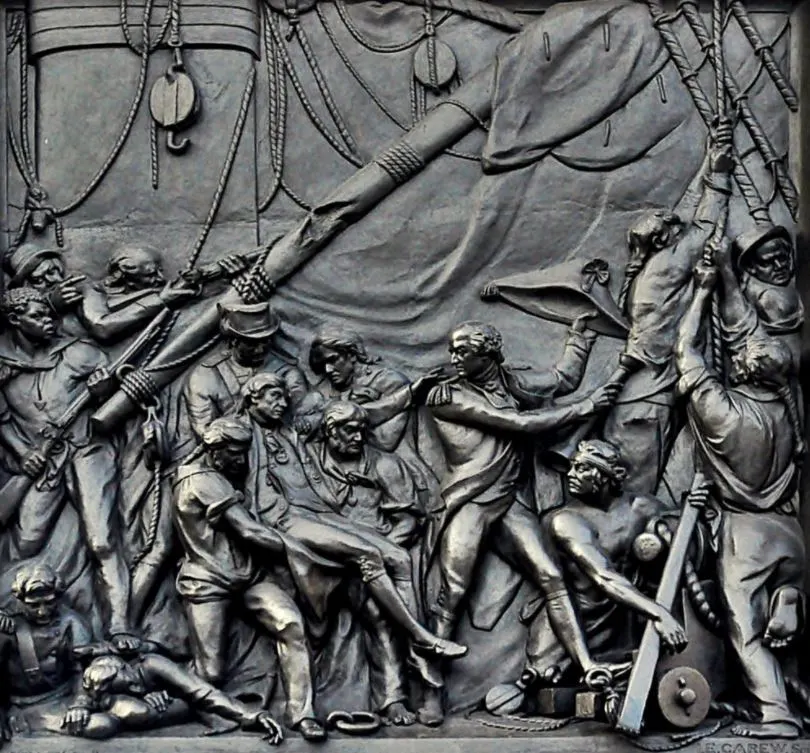
8. The lions at the base were only added in the 1860s
The 4 lions flanking the monument were even added much later as they were put in position in the year 1867. These are 4 identical statues depicting Barbary lions, animals that once lived from the Atlas Mountains in Morocco to Egypt, but which are now locally extinct.
These sculptures were intended to be made of granite as well, but because the original sculptor turned down the commission, the bronze lions were only commissioned in 1858.

9. It’s assumed that the lions were modeled on sculptures in Budapest
These intriguing sculptures of Barbary lions were designed by English painter and sculptor Sir Edwin Landseer in collaboration with Italian-born French sculptor Baron Marochetti.
Both men looked for inspiration in Eastern Europe as it’s assumed that the lions were based on the lions decorating the famous Széchenyi Lánchíd or “Chain Bridge” in Budapest, which were installed just 6 years before the one in London was commissioned.
It’s hard to deny the fact that these sculptures look very similar, don’t you think?
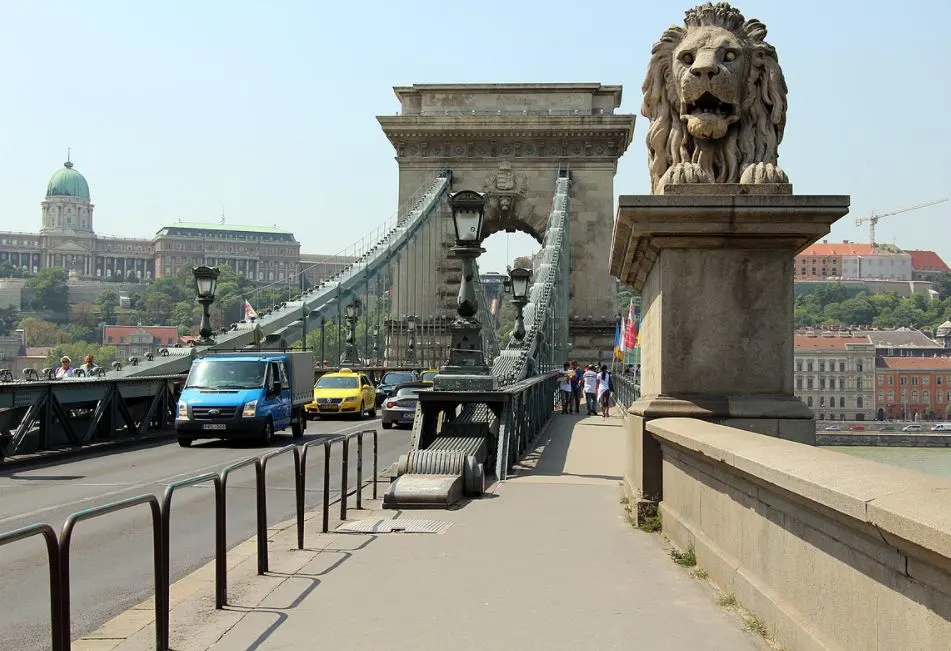
10. Hitler had dodgy plans for the monument during World War II
If the course of history had changed, we might have been forced to admire Nelson’s Column in Germany’s capital of Berlin today. Adolf Hitler was a fervent admirer of the column and had plans to move it to Berlin during World War II.
Fortunately, Hitler’s plan to invade Britain, referred to as “Operation Sea Lion,” didn’t succeed and no such thing ever happened!

11. A remarkable fact was figured out during a renovation in the 2000s
In the early 2000s, the column had seriously deteriorated already so a renovation plan for £420,000 was launched in 2006. This was completely financed by “Zurich Financial Services” in return for advertising space on the scaffolding.
Up until 2006, it was assumed that the total height of the column reached 185 feet (56.4 meters) above the ground. One of the most amazing Nelson’s Columns facts is that it was only then it was discovered that the actual height of the monument is 169 feet (51.5 meters), quite a bit less than originally assumed!
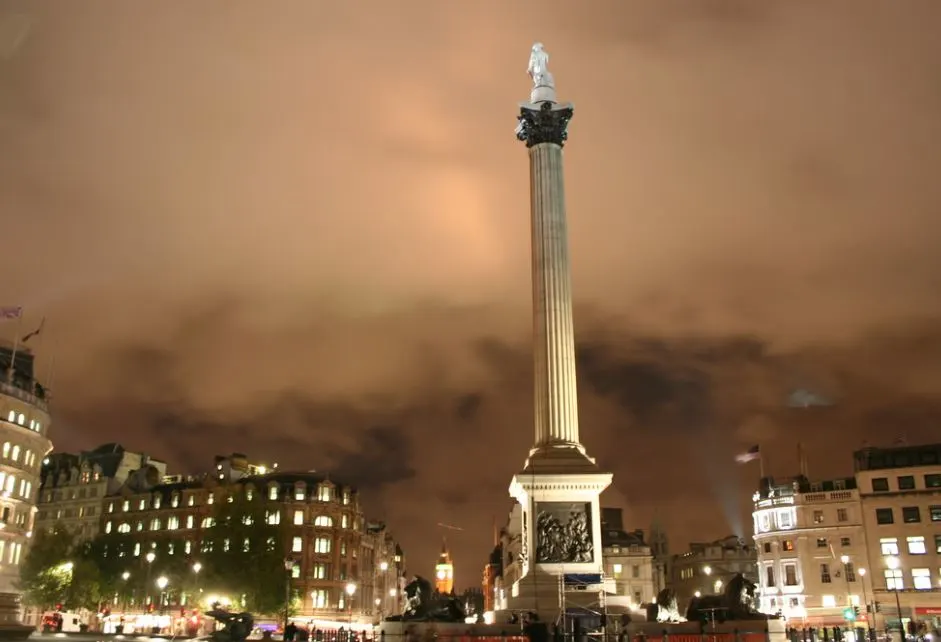
12. It’s one of the last of many monuments built in Nelson’s honor
Equally astonishing is the fact that Nelson’s Column in London was one of the final monuments in honor of Admiral Horatio Nelson to be constructed. The first Nelson Monument was completed the year after his death, an obelisk on Glasgow Green in Glasgow, Scotland, which was completed in 1806.
The Nelson Monument in Scotland’s capital, Edinburgh, is even more impressive as it was constructed on top of Calton Hill between 1807 and 1816 and overlooks the city.
Across the pond, Nelson’s Column in the Place Jacques-Cartier in Montreal, Canada, was constructed by Britons and Canadians in 1809, shortly after Nelson’s death.
A statue of Nelson can be found in Bridgetown in Barbados as well. It decorates the local version of Trafalgar Square and was built 27 years before the monument in London was constructed!
